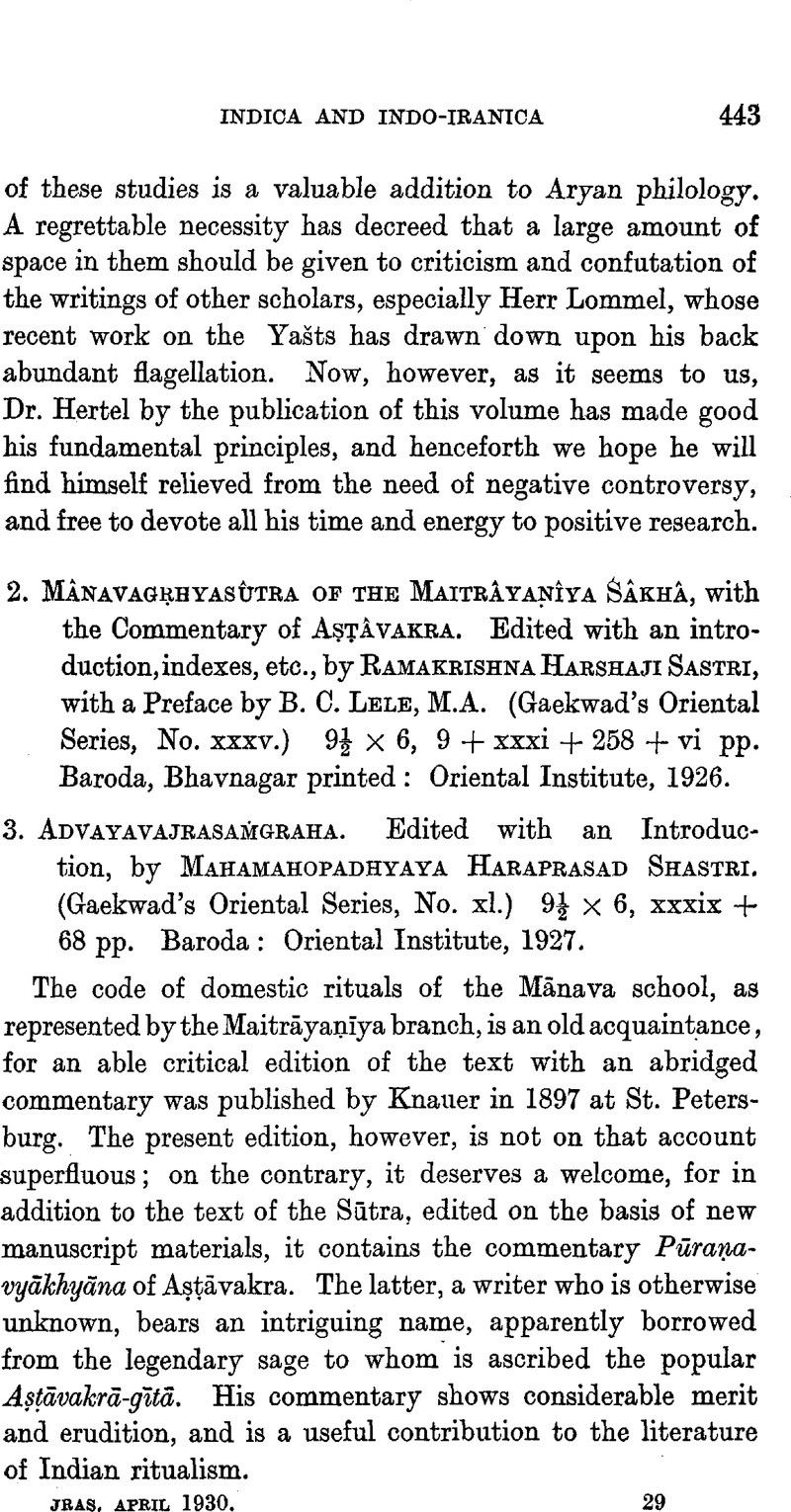No CrossRef data available.
Published online by Cambridge University Press: 15 March 2011

page 444 note 1 I take the opportunity to record with due respect my dissent from the somewhat startling view advanced on pp. ix and xxviii that the “five Dhyāni Buddhas are the Šūnya representation of the five Skandhas”. What suggested the idea of the Dhyāni Buddhas is an obscure problem. To find any deities really like them, we have to step across the frontier of India into Iran, where we may discover something parallel in the post-Zoroastrian cult of the Fravašis.